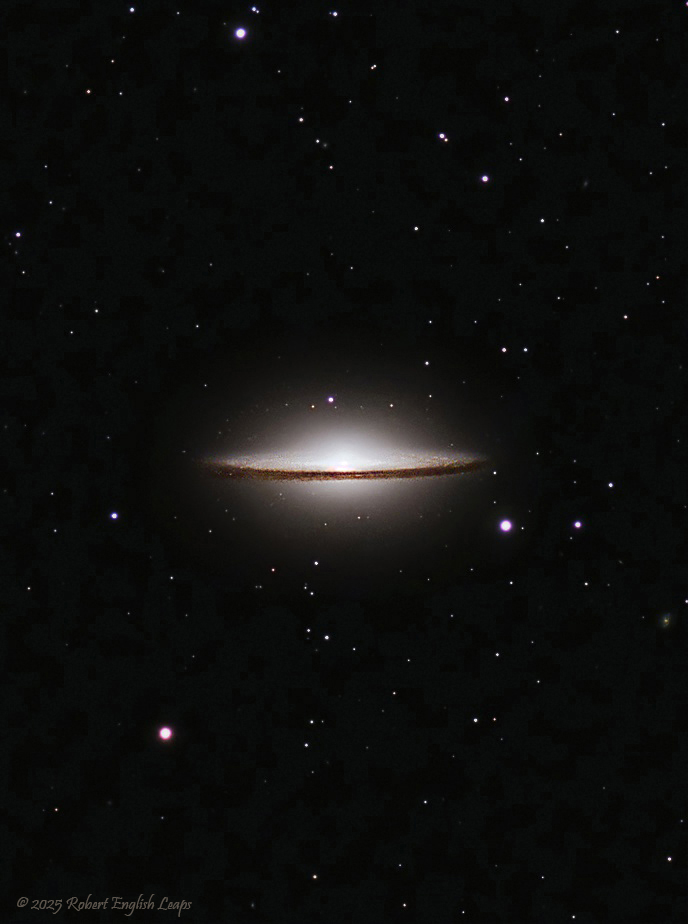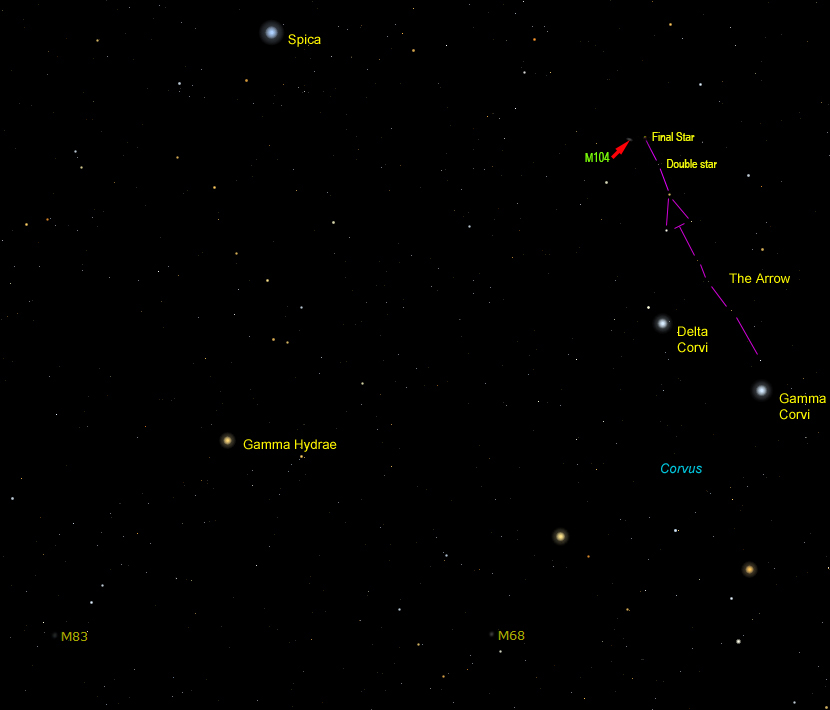Some of the faint star-like objects in the halo of M104 are not foreground stars but globular clusters that belong to M104. The brightness of these clusters has been measured using the Kitt Peak four meter telescope and the Hubble Space Telescope, and using this data you can find the limiting magnitude of the above image. The data yields a limiting visual magnitude of 20.45 for the faintest visible globular cluster. Finding M104: Galaxies appear very different to the eye than they do in long-exposure images. Features like spiral arms are much dimmer and less distinct, and the eye is unable to see color at low light levels. With binoculars and small telescopes, the challenge is to see them at all - to pick out the small dim patch of light from the sky background. You will need a dark clear sky to be successful, and it may take several tries before you have the right conditions. If you succeed, though, the photons that are hitting the retina of your eye have been traveling through space for tens of millions of years. To find M104, look just above the trapezoidal-shaped constellation of Corvus the Crow (Refer to the binocular finder chart below). Just above Corvus there is a line of faint stars, easily visible in binoculars, that forms an "arrow" that points to the vicinity of M104. Follow the arrow to the star marked "Final Star" and then look just to the side of it to the position of the tip of the red arrow in the chart below. You may want to use averted vision to try and spot the galaxy. Look to one side of the galaxy rather than right at it, and experiment with looking at different parts of the binocular field. The galaxy is easy in any small telescope. Telescopes of 6 inches or so aperture should allow you to see the dim form of the dust lane cutting across the glowing core of the galaxy. The positions of Messier 83 (a galaxy) and Messier 68 (a globular cluster) are also shown.
Wide Field View:
|
|||||||||||||||||||||

